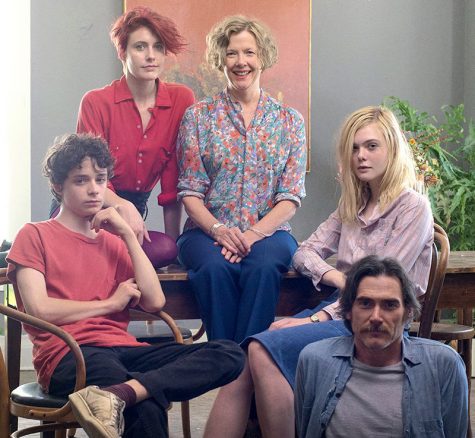Oh Hi, James: Franco Embodies a Cult Film Icon in “The Disaster Artist”

The Disaster Artist tells the story of The Room, known as the worst film ever made (Courtesy of Flickr).
December 6, 2017
Hang on for a minute...we're trying to find some more stories you might like.
Email This Story
By Ryan Di Corpo

The Disaster Artist tells the story of The Room, known as the worst film ever made (Courtesy of Flickr).
James Franco and Tommy Wiseau are having an enigma contest. Franco is a well-respected Hollywood actor and an Oscar nominee who has appeared in several acclaimed films: Milk (2008), 127 Hours (2010), Rise of the Planet of the Apes (2011). But among his accomplished filmography is a slew of curious, even strange, art-house projects — portraying the poet Hart Crane in The Broken Tower (2011), exploring the limits of on-screen gay sexuality in Interior. Leather Bar. (2013) — which complicate his mainstream image. Then there is Tommy Wiseau, a bizarre cult superhero whose journey into mainstream American culture, if you can call it that, began following the release of his terrible and beloved film, The Room (2003) — “a movie that’s so bad it’s good,” writes Steve Rose of The Guardian.
Given Franco’s penchant for unconventional narratives and personas, it is perhaps not a surprise that he would be drawn to Wiseau, whom Franco utterly embodies in his new film, The Disaster Artist. Wiseau is notoriously private, even contradictory, regarding his personal life. Wiseau’s country of origin, source of wealth and real name are all subject to debate. This is curious for a man who, in Franco’s film, seeks to “reveal” himself completely to an audience. The Room itself is a revelation: both of the similarly real and on-screen persona of Wiseau and of the power of one’s will persisting against all odds to create an unforgettable piece of guerilla filmmaking.
The Disaster Artist chronicles the insane, improbable journey of Wiseau and actor Greg Sestero (played by Dave Franco) to late 90s Los Angeles in search of stardom and success. The production of Wiseau’s The Room — a film that Adam Rosen of The Atlantic terms “outsider art” — is fraught with problems, mainly due to Wiseau’s inexperience and sheer cinematic incompetence, which helped propel the film to the loftiest heights of cult film fandom. Franco’s portrayal of Wiseau as a recklessly ambitious parvenu who — despite making an objectively bad film — nevertheless achieves his dream of making a film is oddly inspiring.
The film also provides a meditation on the anatomy of power, especially as it relates to the entertainment industry. Upon their arrival in Los Angeles, Wiseau and Sestero immediately meet opposition. While Sestero finds representation with a high-profile agent who ultimately does not return his calls, Wiseau endures insults and contempt for his misguided aggressiveness and self-assuredness.
After securing a relatively experienced crew, his own film equipment and studio for his “real Hollywood movie,” Wiseau mirrors back to his partners the controlling, condescending attitudes exhibited by others he met within the industry. Franco’s Wiseau is an impassioned and demanding taskmaster assured of his “vision,” occasionally cruel to his crew and, in one scene, completely sexually inappropriate towards a young actress. Therefore, the film, perhaps unintentionally, points towards the type of atmosphere in Hollywood that has been recently met with increased scrutiny and concern.
Franco’s portrayal of Wiseau as a recklessly ambitious enfant terrible who — despite making an objectively bad film — nevertheless achieves his dream of making a film is oddly inspiring. The Disaster Artist is consistently hilarious and strangely endearing, but the film does try not to indulge in unabashed hero worship. Dave Franco is also excellent, portraying actor Greg Sestero, the once shy, wide-eyed friend of Wiseau who wrote the book on which The Disaster Artist is based.
Franco’s film necessarily plays better with viewers who have seen and are fans of The Room, which is still regularly watched throughout the country at midnight screenings. Yet The Disaster Artist is still accessible to those who are not well-acquainted Wiseau and his work. Ultimately, the film succeeds by presenting universal themes of friendship, betrayal and the drive for success with humor, sheer absurdity and humanity.











If you want a picture to show with your comment, go get a gravatar.